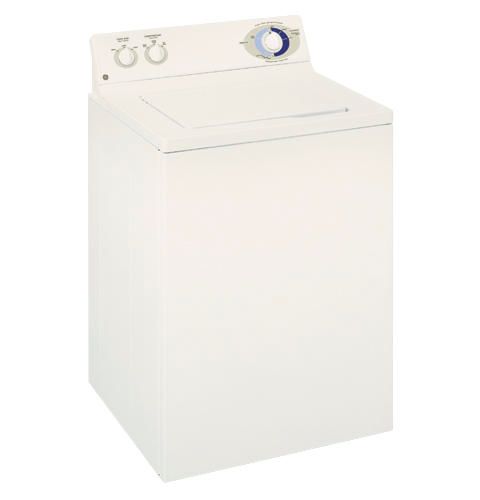How to Repair Leaking GE Washer
**NOTICE**
Due to the danger and complexity of electronic equipment repair, the following technical tip is intended for professional reference only. Please refer to manufacturer’s recommendations as Encompass does not guarantee the accuracy, reliability or safety of this information.
While some malfunctions are more concerning than others, most of them can be easily fixed with a little guidance. To help get you started, we’ve compiled a list of some of the most common maintenance mistakes and component failures which often lead to a leaky washer.
Maintenance Tips
- Excessive vibrations brought on by an unbalanced washer can cause water to spill out of an appliance as the machine agitates clothing. To determine whether or not a washer is balanced, place a leveler on the main top. If the appliance turns out to be unbalanced, simply correct the problem by adjusting its legs. Some floors though may be too unlevel to solve the issue. If the issue is not addressed, and the washer continues to vibrate uncontrollably, other appliance components may get damaged.
- Leaks located at the back of the washer can indicate a loose hose connection. Before inspecting the hoses, turn off the appliance’s water
supply, and pull it machine away from the wall. Start investigating the leak by examining the drain hose, which runs from the drain port on the washer to the standpipe or laundry tub. If either side of the hose feels loose, correct the issue. Or, if they are both intact, move on to the inlet hoses. The machine’s hot and cold inlet hoses run from the inlet valve on the washer to the hot and cold faucets on the laundry room wall. If one or more of the connections are loose, tighten them to stop the leak. - Washers are designed to handle a certain amount of detergent. When that amount is continuously surpassed, the soap residue leftover will end up clogging the overflow tube, resulting in puddles on the floor. Stick to the detergent recommendations in the owner’s manual to resolve any type of soap overuse.

GE washer model WCSR2080BCC
Appliance Repair Tips
Unplug the appliance and turn off its water supply before starting any repairs. Safety goggles and gloves are needed to protect hands and eyes from sharp objects as you remove and replace damaged components.
The Tub-to-Pump Hose
When the washer tub drains, water travels through the tub-to-pump hose. As an appliance ages, the hose can crack, causing water to leak out. Replacing the damaged tub-to-pump hose is not complicated and should only take a little over an hour.
How to Replace the Tub-to-Pump Hose in Your GE Washer
- To gain access to the tub-to-pump hose, remove the washer’s front panel. At the left and right corners of the washer, insert a putty knife in between the main top and the front panel. Slide the putty knife toward the center of the appliance. When the knife makes contact with a locking tab, push down to release the mechanism. Once both tabs are disengaged, tip the front panel back, and take it off the washer.
- The tub-to-pump hose can be found in the washer’s lower right corner. Before disconnecting it, place a towel in the area underneath the component. Use pliers to loosen and slide the lower clamp up the hose. Then, pull the bottom half of the hose off the drain pump. A small amount of water is likely to come out of the hose, which should be caught with the towel. Next, use a nut driver to unthread the screw securing the upper hose clamp. Once the clamp is loose, disconnect the top end of the hose from the outer tub. Now the damaged tub-to-pump hose can be removed from the washing machine.
- Before discarding the old hose, take the top and bottom clamps off the part so they can be attached to the new drain hose.
- Slide the old clamps onto the new tub-to-pump hose. With both clamps attached, go to the washer and install the top end of the hose to the outer tub. Secure the connection by tightening the clamp screw with the nut driver. Then, attach the lower end of the hose to the pump. Using pliers, slide the clamp down the hose to secure the link between the drain pump and the hose.
- To complete the repair, reinstall the washer’s front panel. After the appliance is reassembled, plug it in and turn on its water supply. Test the new tub-to-pump hose by washing a load of laundry. If the washer doesn’t leak, the new component resolved the issue.
The Drain Pump
If the washer is leaking during the wash cycle or the drain cycle, there is a good chance it has a faulty drain pump. The drain pump pulls water from the washer tub and pushes it out of the appliance through the outlet hose. If the pump is cracked, water will leak onto the laundry room floor.
How to Replace GE Washer Drain Pump
- Start repair by taking off the washer’s front panel. In between the appliance’s main top and front panel are two locking tabs: one is near the right corner and the other is near the left corner. To disengage the tabs, slide a putty knife between the panels and press down. After both tabs are released, lift the front panel up and off the washer.
- Locate the drain pump and place a towel underneath it to catch any water that may come out during the repair. Next, disconnect the wire harnesses running to the drain pump. Then, use pliers to loosen the clamps securing the outlet and inlet drain hoses to the pump, and pull the hoses off the drain pump valves. With a socket wrench, unthread the screws holding the pump’s mounting plate to the bottom of the washer. Once the screws are removed, pull the damaged drain pump out of the appliance.
- To install the new drain pump, attach its mounting plate to the bottom of the washer. After the drain pump is in place, reconnect the wire harnesses and the outlet and inlet drain hoses. Make sure the hoses are attached properly and the clamps are securely linking the hoses to the pump valves.
- With the new drain hose successfully connected, reinstall the washer’s front panel. Once the panel is reattached, plug the appliance back in and turn on the water supply. To ensure the repair worked, test out the machine by running a wash cycle.
Special thanks to Fred’s Appliance Academy for this helpful tip!





Leave a Reply